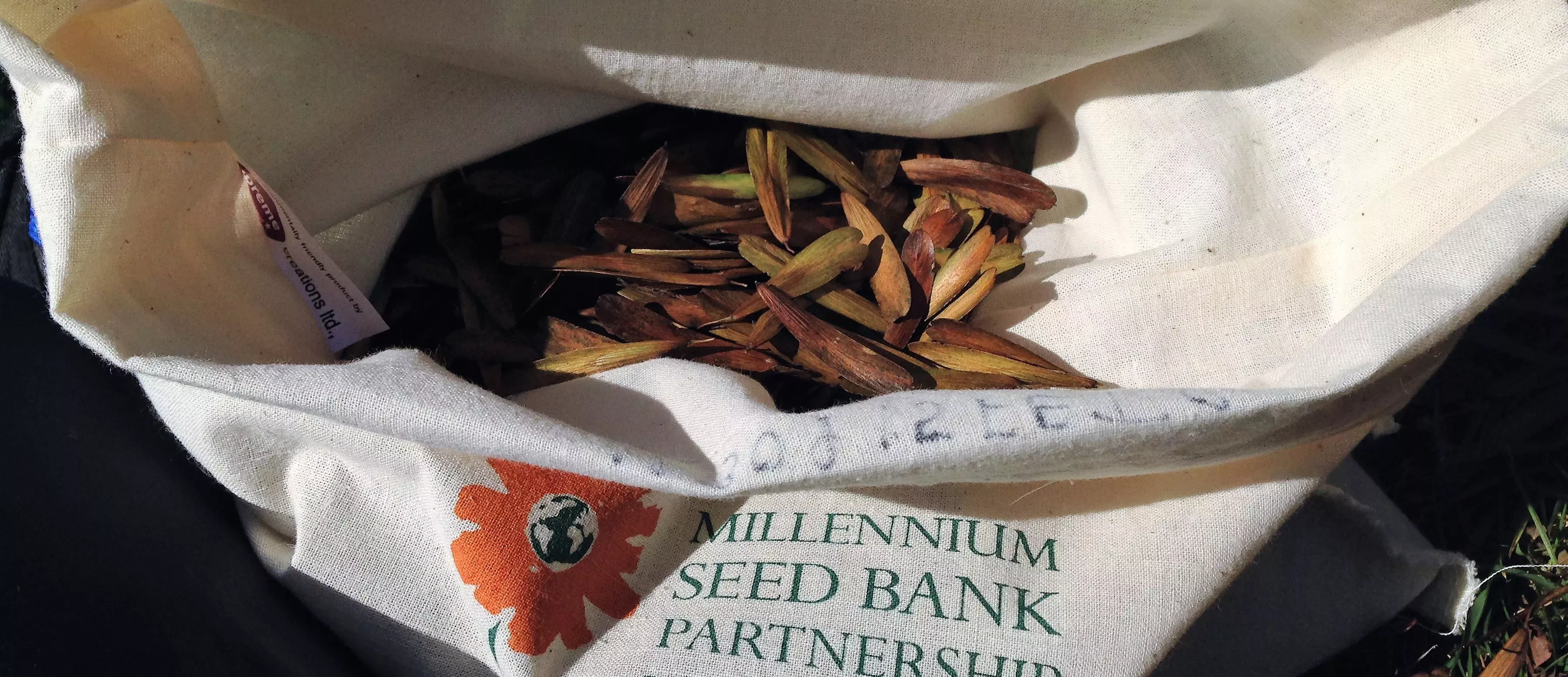18 June 2025
4 min read
25 facts to celebrate 25 years of the Millennium Seed Bank
As our incredible Millennium Seed Bank celebrates its 25th anniversary, we break down this groundbreaking project in 25 facts and figures.

The world’s largest wild plant seed bank and the most biodiverse place on Earth.
This year marks 25 years since the Millennium Seed Bank opened in November 2000.
Nestled in the heart of Sussex at Wakehurst, scientists and an incredible network of global partners have banked seeds from thousands of plant species to make them available for generations to come.
Get your head around its achievements with our handy list of 25 facts to celebrate 25 years of the Millennium Seed Bank (MSB).

1. Nearly 2.5 billion seeds have a home at the MSB. These seeds have been collected by Kew scientists, partners and institutions all around the world to store at our sub-zero state-of-the-art underground facility.
2. Over 279 global partnerships have participated in the largest ex situ (stored away from their natural habitat) plant conservation programme of its kind.
3. 45% of flowering plant species are estimated to be at risk of extinction. This is the alarming figure set out in Kew’s State of the World Plants and Fungi 2023 report. It shows just how important the work of the MSB is, as an insurance policy in case species do go extinct.
.jpg.webp?itok=kTSdS2y8)
4. Over 40,000 species are represented in the MSB seed collections. These range from the very familiar to some that are new to science and only found in some of the most remote corners of the planet.
5. There are just under 103,000 separate seed collections banked in the MSB, with many of these containing hundreds, if not thousands, of individual seeds.
6. Over 98% of UK native bankable plant species' seeds are stored in the vaults of the MSB. But we’re not done yet. The UK Threatened Flora Project is enhancing these collections by collecting seeds from different populations of threatened species, giving us a more genetically diverse collection.

7. In the last five years alone, we provided seed banking training to over 850 professionals from 44 different countries through onsite, online and at partner sites.
8. Seeds of around 11,000 trees and shrub species are stored in the MSB. The Global Tree Seed Bank programme added a further 3,500.
9. Kew scientists and international partners are currently focusing on five of the world's biodiversity hotspots, with a focus on banking rare, endangered and endemic species.

10. More than 70 staff, researchers and volunteers work at the MSB in Wakehurst, working tirelessly to preserve seeds and provide them to restoration programs around the world.
11. Scientists at the MSB have published more than 520 research papers since 2000.
12. This is a remarkably international initiative, with 100 countries and territories working together to support this vast conservation ambition.
13. The flora from 36 terrestrial biodiversity hotspots have their seeds frozen in time in these underground vaults.
14. -20°C is the temperature at which our seeds are stored.
15. Nine of the world’s biogeographic regions and all seven continents have seeds conserved through the MSB partnership – including one of the most southerly collected seeds, Deschampsia antarctica.

16. Every 10 years, seeds are removed from collections to test if they can still sprout into a healthy plant, to make sure they are still useful.
17. 71% of the MSB’s requested seed samples have been used in scientific research and 14% in conservation. Some are grown and displayed in gardens at Kew, Wakehurst or other botanic gardens around the world – or even used in education.
18. The smallest seeds banked in the MSB measure just 0.07mm across and belong to the Chinese ground orchid (Bletilla striata).

19. The American Prairie landscape at Wakehurst features 15 species grown from wild-collected seeds from North America.
20. 18°C, 15% relative humidity – the conditions of the dry room where seeds are dried once they have arrived at the MSB, in advance of being stored underground. This step improves the longevity of the seeds whilst in storage. Seeds need to be dried before they can be stored at sub-zero temperatures or they won’t survive.
21. An estimated 8% of all seed plants produce recalcitrant seeds, which can’t be stored using our traditional drying techniques.
22. That’s why we’re exploring new cryopreservation techniques that store seeds at -180°C to ensure that as many species as possible are represented in our collections.

23. It took 2.5 years to build the MSB glass building, complete with flood and radiation-proof chambers, solar panels and laboratory equipment.
24. Half the work in the Wakehurst nurseries is conducted for science, including 40,000 plants grown in the last 20 years from seeds at the MSB.
25. Working with all our partners across the globe, at least 16% of the world’s bankable plant species are stored in long term conservation.

.jpg.webp?itok=g86-0o6S)

